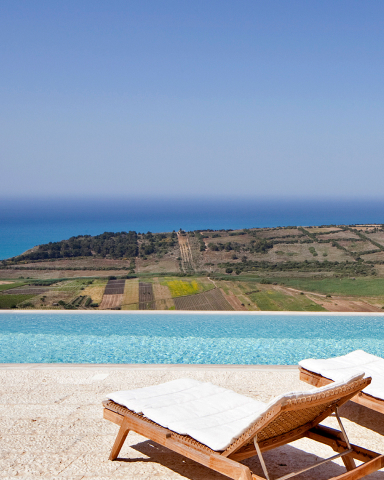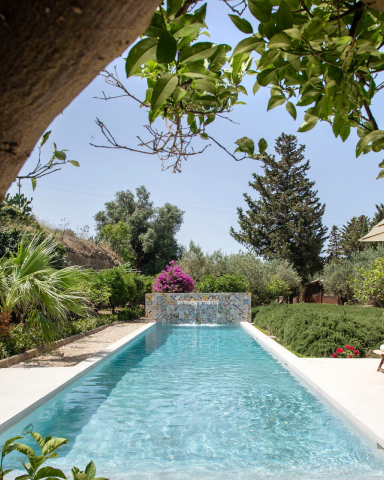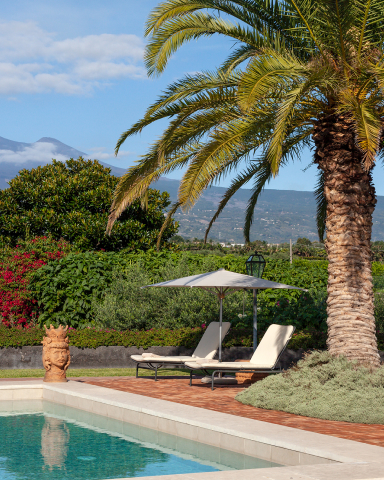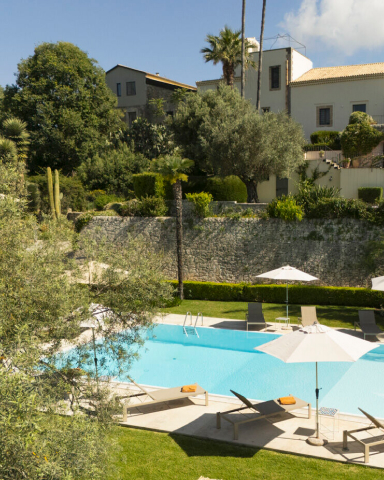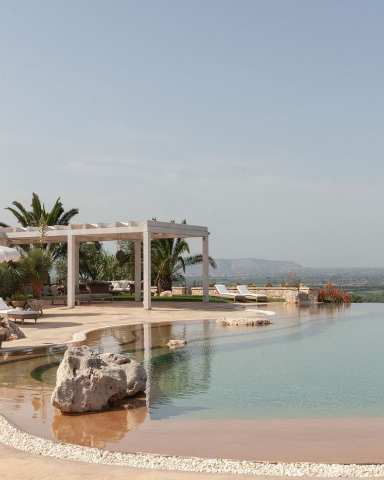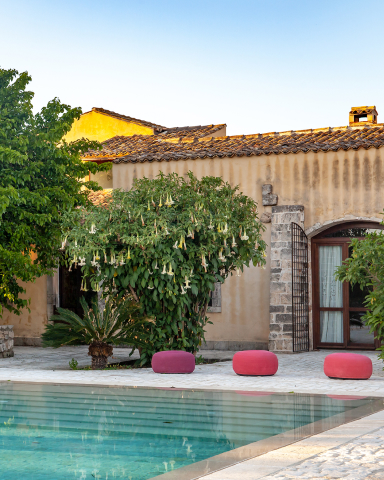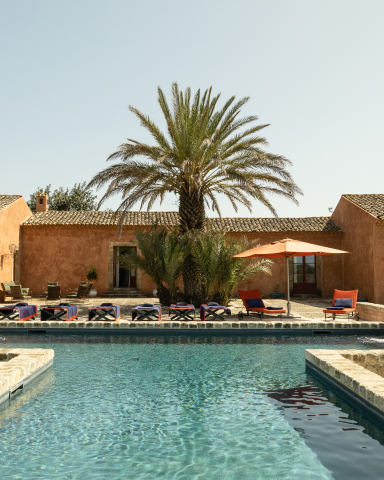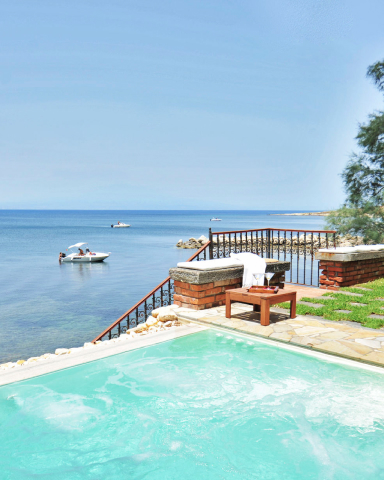A Brief History of Three Sicilian Towns: Syracuse, Gibellina and Poggioreale

The serenity and beauty of Sicily belie the tumultuous history that has touched every part of this fascinating island. Its central location and rich natural resources have made it a crucial strategic location that has been fiercely fought over since the time of the Ancient Greeks, transforming Sicily's fascinating towns and cities into what we see today.
But it’s not just human influence that has crafted this magnificent island. Natural forces are also constantly at play, with a huge earthquake in 1968 destroying the towns of Gibellina and Poggioreale and opening up one of the richest chapters of 20th-century Sicilian history.
Syracuse vs. Athens
Syracuse, on the southeast of the island, has always been the most important and powerful Greek city in Sicily, and in 413 BCE, it became arguably the most powerful city in the whole of the Mediterranean. The ambitious and aggressive Athenians had coveted the western Mediterranean for some time, and Syracuse - and Sicily in general - was an alluring prospect.
However, there was one significant problem: southern Italy and Sicily were inextricably linked to the Corinthians and the Spartans (Syracuse had been founded by the Corinthians), and after having recently been at war with both, Athens preferred to steer clear of unnecessary provocations.
When Selinus and Segesta, two important cities of western Sicily, fell out in 416 BCE, Segesta appealed to Athens for help and the latter promptly obliged. Athens dispatched a large army and fleet under the triple command of Lamachus, Nicias and Alcibiades on an expedition that was doomed to fail.
Firstly, just as preparations were underway for the siege of Syracuse, Alcibiades was recalled to Athens. Then, the aggressors’ tactics of cutting off supplies to Syracuse and starving the population came to nothing, as Hermocrates, the Syracusan general, counterattacked, killing Lamachus and leaving just Nicias in command.
Things went from bad to worse for the Athenians when Spartan and Corinthian forces under Gyllipus arrived to assist the valiant Syracusans. Nicias attempted to prevent Syracuse from completing its defensive walls but was pushed back to three fortresses at Plemmirio.
Now desperate, the last-standing Athenian commander wrote home for reinforcements, which eventually arrived in the early months of 413 BCE under the command of Demosthenes. However, despite this extra manpower, Athenian fortunes continued to wane, and after several naval defeats, the two generals decided to abandon the operation.
Superstition then played its hand in true Greek style: a partial eclipse persuaded Nicias to postpone his navy’s departure for a night. The Syracusans seized their opportunity and attacked, all but destroying the Athenian fleet. Nicias' armies fled towards Catania and Naxos, but many, some say up to 20,000, were captured and imprisoned in Syracuse’s great stone quarry, where, sooner rather than later, they would perish.
Although not the final act of the Peloponnesian Wars, Syracuse’s victory over mighty Athens signalled a change in the balance of power that would ultimately lead to the break up of Athens’ great empire in 404 BCE.
Meanwhile, Syracuse basked in its glory before undergoing more political upheaval, as Dionysius the Tyrant deposed the town’s democratic hero, Hermocrates. Then the bell rang again, signalling the beginning of the next round. In 211 BCE, the Romans defeated the Greeks at Syracuse to bring an end to nearly 500 years of Sicily’s role at the centre of Magna Graecia (Greater Greece), and the rest, as they say, is history.

Ortigia, Syracuse
The earthquake of 1968
In more recent history, natural forces rather than overseas invaders have left an indelible mark on two Sicilian towns. On the night of 15 January 1968, a terrible earthquake raked through the Valle del Belice in southwest Sicily. Around 900 people died and 10 towns and villages were significantly damaged. Two in particular, Gibellina and Poggioreale, were left in ruins.
The story of how Gibellina and Poggioreale overcame this cataclysmic event and dealt with the bleak task of rebuilding and relocating is a fascinating, moving and thought-provoking tale.

Gibellina - from ruins to art
The mayor of Gibellina at the time of the earthquake was Ludovico Corrao, a well-connected politician who also sat in the Italian senate. He enlisted the talents not only of Italy’s top town planners but also architects and artists of the calibre of Pietro Consagra, Mimmo Paladino, Mario Schifano, Ludovico Quaroni and Franco Purini, to create a new town situated about 10km to the west of the original Gibellina.
The project, known as the ‘Dream in Progress’, featured public gardens, large piazzas, post-modern buildings, wide roads and numerous gigantic contemporary sculptures. As the project developed, more and more artists from around Italy donated works, and soon there was enough to stock the newly built Museum of Contemporary Art.
After about 10 years of living in temporary prefabricated houses near the ruins of their former homes, the Gibellinesi finally moved to their new town. What these humble, hard-working people thought of their new, highly intellectual surroundings is hard to imagine.
In 1983, Corrao, who had dedicated the rest of his life to Gibellina and its inhabitants, invited the internationally renowned artist Alberto Burri to visit the new Gibellina. During his stay, Burri asked to see the ruins of the old town, and it was during his visit there that a new idea took form. He decided to transform the rubble and destitution of old Gibellina into a work of art that would provide a fitting memorial to those who had died and create an artistic link between the old and new towns.
And so began work on one of the largest opere d'arte (artworks) ever created. Except for the streets, which were left open for visitors to wander through, the whole area of the old town (120,000 square metres) was covered with a five-foot deep layer of white concrete, as if a shroud had been laid over the ruins.
Looking from above, one has the impression of seeing an enormous grey-white tortoise shell moulded over the side of the hill. Immersed in glorious countryside and offering stunning views of the idyllic Valle del Belice, the Cretto di Burri is an awe-inspiring work that is both uplifting and solemn, a testimony to man's durability and creativity in the face of adversity.
Poggioreale - new beginnings and a ghost town
Until that fateful night of 15 January 1968, Gibellina’s closest neighbour was Poggioreale, situated just 3km away to the east. Occupying a panoramic position overlooking the gently undulating valley below, Poggioreale was also destroyed when the earthquake struck.
After assessing the damage, it was decided that rebuilding the town on the existing site would be uneconomical, so a new area was proposed a few kilometres down the valley. As with the new Gibellina, architects soon got to work on the construction of the new Poggioreale.
However, while contemporary town-planning ideas and techniques were employed for the project, there were to be no extravagant artistic flourishes, no gigantic sculptures and little postmodern architecture. As far as the townsfolk were concerned, their new town had one significant advantage over that of their former neighbours: it was close to their old homes, which were visible across the valley. This meant that, unlike the inhabitants of Gibellina, the Poggiorealesi were not cut off from their old life and were still close to the land many of them worked.
The mayor of Poggioreale had no great artistic pretensions nor artist friends of note, and so, while Burri completed his Cretta across the valley, old Poggioreale was left as it was, frozen in time, a ghost town gazing with melancholy across the countryside at its modern successor. Wandering around the streets of old Poggioreale is an extremely evocative and slightly eerie experience, but also completely fascinating.
Both old Gibellina and old Poggioreale suffered the same fate, but their post-earthquake destinies could hardly be more different. And while both have now found peace in the tranquil surroundings of their gentle vine-carpeted valley, they are also a reminder of how nature, so prolifically productive and giving, can so quickly turn destroyer.

We're Villa Matchmakers
Because our local experts have personally visited each of our destinations, we know exactly what makes them special. Tell us what your ultimate villa holiday looks like, and allow us take care of the rest.

